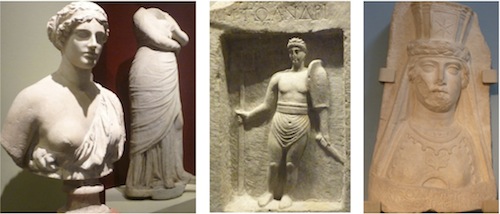Buy or gift a stand-alone digital subscription and get unlimited access to dozens of back issues for just £18.99 / $18.99 a year.
Please register at www.exacteditions.com/digital/cornucopia with your subscriber account number or contact subscriptions@cornucopia.net
Buy a digital subscription Go to the Digital EditionThe world’s first university museum, established in 1683 for Elias Ashmole’s cabinet of curiosities, is an intelligently laid out modern museum that contains, among many other items, the Marmora Arundeliana – the Arundel Marbles. These had been amassed by Thomas Howard, Earl of Arundel, a pioneer collector of antiquities, and catalogued in 1628, some 40 years before being presented to the museum. Some are displayed in the Greek and Roman Sculpture Gallery (Room 21) and there are tomb sculptures from Smyrna in the Rome Gallery (Room 13) as well as a number of small pots, figures and implements. Two fragments from the Parian Chronicle are the earliest known Classical chronology, which runs from 1580/1BC to 264/3BC and has been of great importance in dating events from this period. They come from Paros, and were bought in Smyrna (Izmir) by one of Arundel’s agents who operated in Istanbul and around the Eastern Mediterranean so successfully that a visitor to Smyrna complained: “The scarcity of antiquities now to be found in Smyrna arises from hence, that it furnished the greatest part of the Marmora Arundeliana.” In the Cast Gallery are copies of sculptures from Aphopdisias made with the help of the English Friends of Aphrodisias, and the Rome room has the gilded bronze lettering from the gate of the emperor Hadrian in Antalya.


The museum also has the collection of Arthur Evans, excavator of the Minoan Palace of Knossos in Crete, who was Keeper of the Museum from 1884 to 1909. An Islamic Room explains how to spot a fake Iznik plate, and there are church and domestic items from Byzantium.
The museum building dates from 1845 and was designed by Charles Robert Cockerell who had travelled extensively around the Classical sights of Greece and Asia Minor. He discovered the Temple of Apollo in Bassae in the Peloponnese, and the British Museum later purchased 22 relief panels from the temple. Casts of these reliefs are displayed in the Ashmolean, and in The Travellers Club in London.
 Issue 66, December 2023
Turkey’s Centenary Issue
Issue 66, December 2023
Turkey’s Centenary Issue

Cornucopia works in partnership with the digital publishing platform Exact Editions to offer individual and institutional subscribers unlimited access to a searchable archive of fascinating back issues and every newly published issue. The digital edition of Cornucopia is available cross-platform on web, iOS and Android and offers a comprehensive search function, allowing the title’s cultural content to be delved into at the touch of a button.
Digital Subscription: £18.99 / $18.99 (1 year)
Subscribe now